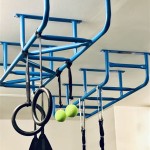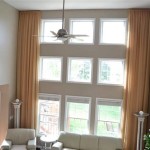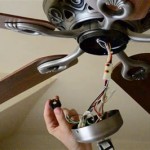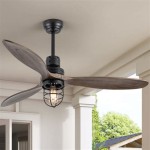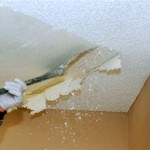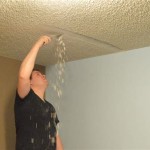Drop Ceiling Ideas for Bathrooms
Drop ceilings offer a versatile and practical solution for bathroom renovations, providing a clean, finished look while concealing plumbing, wiring, and ductwork. They also offer excellent opportunities for integrating lighting and ventilation systems. This article explores various drop ceiling ideas suitable for bathrooms, considering factors such as material, design, and functionality.
Material Selection: Choosing the right material is crucial for a bathroom drop ceiling due to the presence of moisture and humidity. Traditional mineral fiber tiles are economical but susceptible to water damage. Moisture-resistant options are recommended, including:
PVC Tiles: Polyvinyl chloride (PVC) tiles are a popular choice due to their exceptional water resistance, durability, and ease of maintenance. They are available in various colors, patterns, and textures, offering design flexibility.
Aluminum Panels: Aluminum ceiling panels provide a sleek, modern aesthetic and are highly resistant to moisture and corrosion. They are also lightweight and easy to install. Some aluminum panels offer acoustic properties for sound absorption.
Fiberglass-Reinforced Plastic (FRP) Panels: FRP panels are a robust and durable option, offering excellent resistance to moisture, impact, and chemicals. They are commonly used in commercial settings but are also suitable for residential bathrooms.
Design Considerations: The design of a drop ceiling can significantly impact the overall bathroom aesthetic. Consider the following design elements:
Color and Pattern: White is a classic choice for bathroom ceilings, creating a bright and airy feel. However, colored tiles or panels can add a touch of personality and complement the bathroom's color scheme. Textured tiles can also add visual interest.
Grid System: The grid system, which supports the ceiling tiles or panels, can be chosen to complement the overall design. White grids are common, but black or metallic grids can create a more contemporary look.
Layout and Pattern: Standard square tiles are the most common layout, but rectangular or diagonal patterns can add a unique touch. Consider the size of the bathroom and the desired aesthetic when selecting a layout.
Integrating Lighting and Ventilation: Drop ceilings offer a seamless way to integrate lighting and ventilation systems:
Recessed Lighting: Recessed lighting fixtures can be easily installed in drop ceilings, providing even illumination and a clean, modern look. Consider using LED lights for energy efficiency and long lifespan.
Ventilation Fans: Bathroom exhaust fans can be integrated into the drop ceiling, effectively removing moisture and preventing mold growth. Choose a fan with appropriate CFM (cubic feet per minute) rating based on the bathroom size.
Combining Lighting and Ventilation: Some manufacturers offer combination units that integrate lighting and ventilation in a single fixture, streamlining the installation process and saving space.
Installation Tips: While professional installation is recommended, DIY enthusiasts can install drop ceilings with careful planning and execution. Key installation considerations include:
Accurate Measurements: Precise measurements are essential for ensuring a proper fit and avoiding material waste. Carefully measure the bathroom dimensions before purchasing materials.
Level Grid System: A level grid system is crucial for a smooth and even ceiling surface. Use a level to ensure proper alignment during installation.
Proper Cutting and Fitting: Cutting tiles or panels accurately is important for a professional finish. Use appropriate cutting tools and follow manufacturer instructions.
Safety Precautions: Always wear safety glasses and a dust mask when cutting ceiling materials. Follow all safety guidelines provided by the manufacturer.
Maintenance and Cleaning: Maintaining a drop ceiling in a bathroom is relatively simple. Regular cleaning with a damp cloth or sponge can remove dust and grime. For more stubborn stains, a mild detergent solution can be used. Avoid abrasive cleaners that can damage the ceiling surface.
Budget Considerations: The cost of a drop ceiling varies depending on the chosen materials, design, and installation method. PVC tiles are generally the most affordable option, while aluminum and FRP panels are more expensive. Professional installation adds to the overall cost. Setting a budget beforehand can help narrow down the choices and ensure a cost-effective renovation.
Accessibility: Drop ceilings provide easy access to plumbing and wiring, making future repairs and maintenance easier. This accessibility can be a significant advantage compared to traditional drywall ceilings.
By carefully considering these factors, homeowners can choose a drop ceiling solution that enhances the functionality and aesthetics of their bathroom while providing long-term durability and ease of maintenance.

20 Bathroom False Ceiling Ideas To Try Out In 2024

50 Budget Friendly False Ceiling Designs For Every Home 2024

Bathroom False Ceiling Design Ideas For Your Home Designcafe

15 Best Bathroom Ceiling Design Ideas With S 2024

20 Bathroom False Ceiling Ideas To Try Out In 2024

Bathroom Ceiling Design Ideas For Your Home

Bathroom False Ceiling Design Ideas For Your Home Designcafe

Bathroom Stretch Ceiling Design False Ceilings Pop

20 Bathroom False Ceiling Ideas To Try Out In 2024

15 Best Bathroom Ceiling Design Ideas With S 2024
See Also

